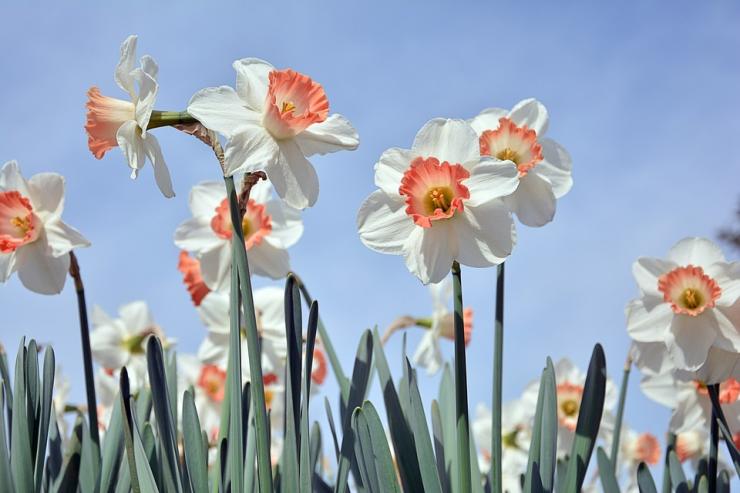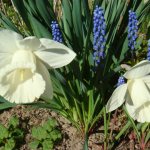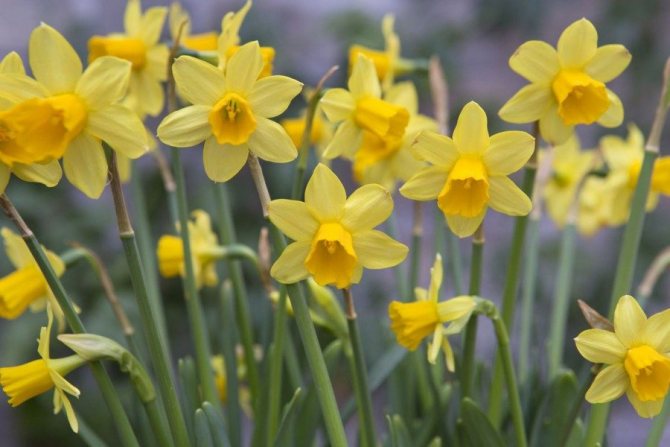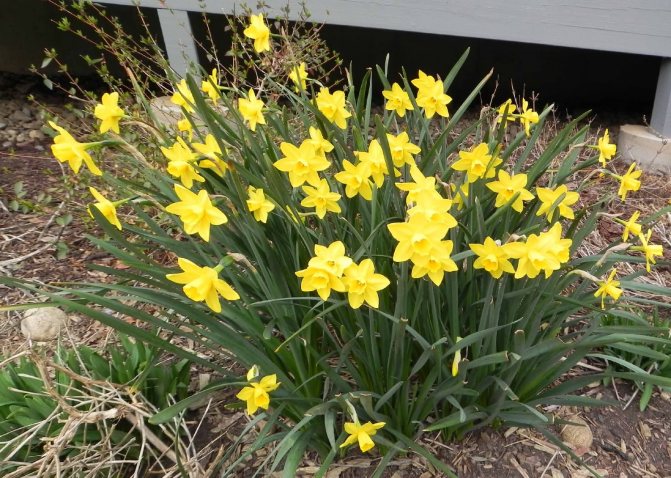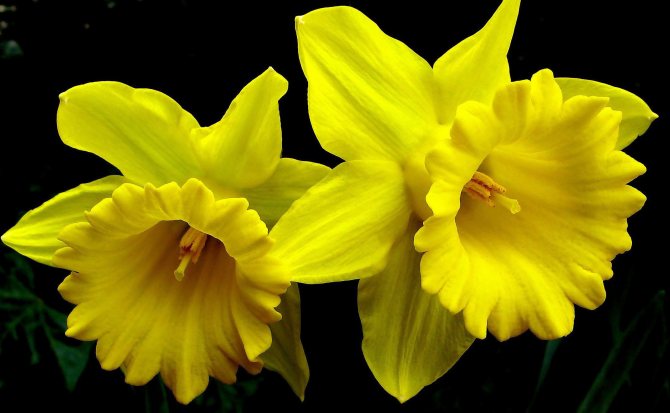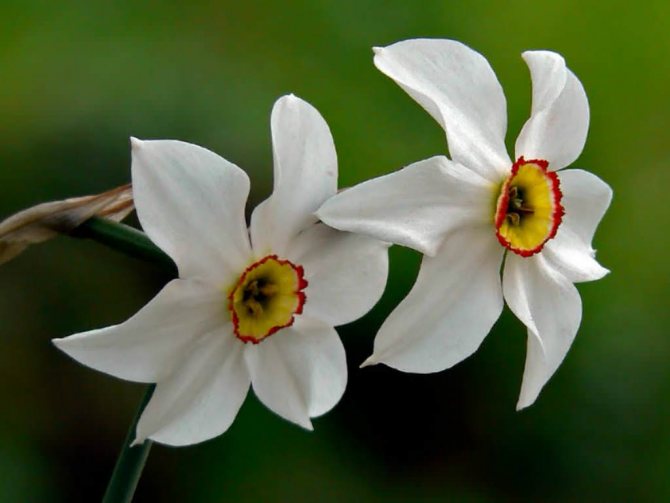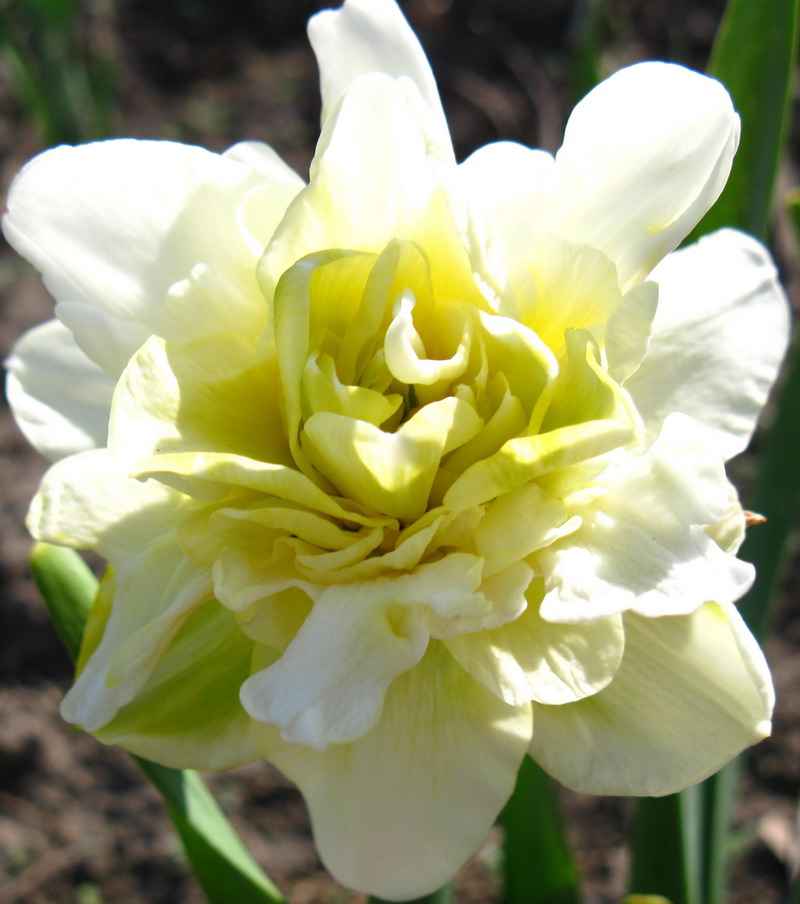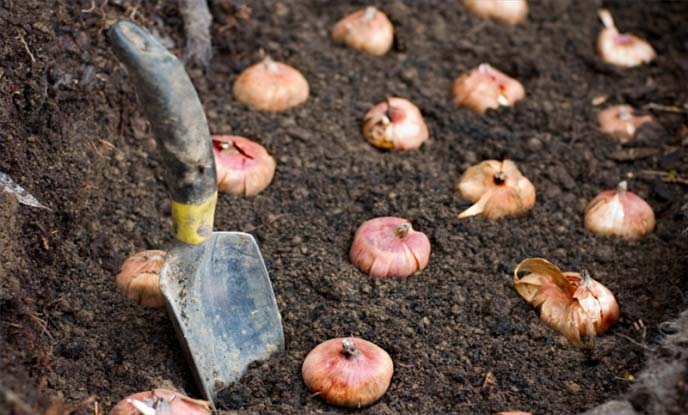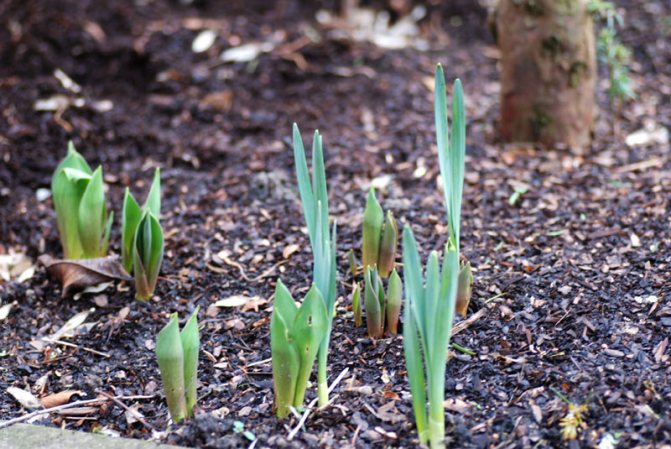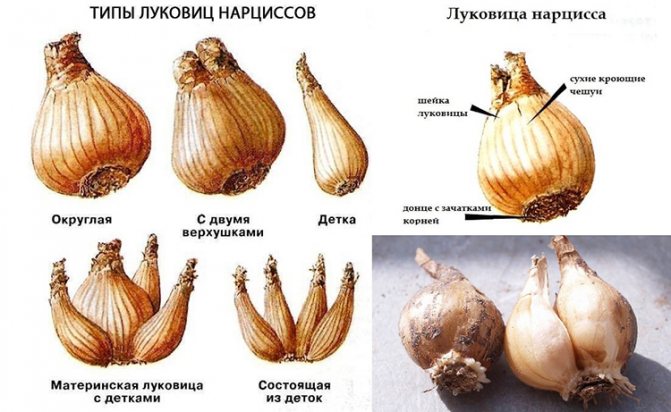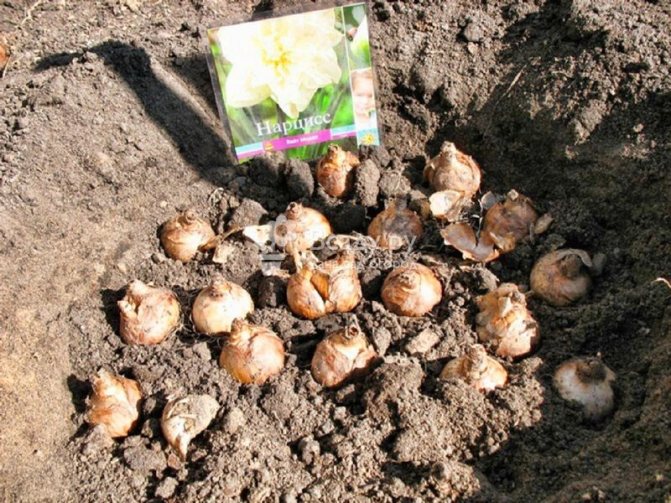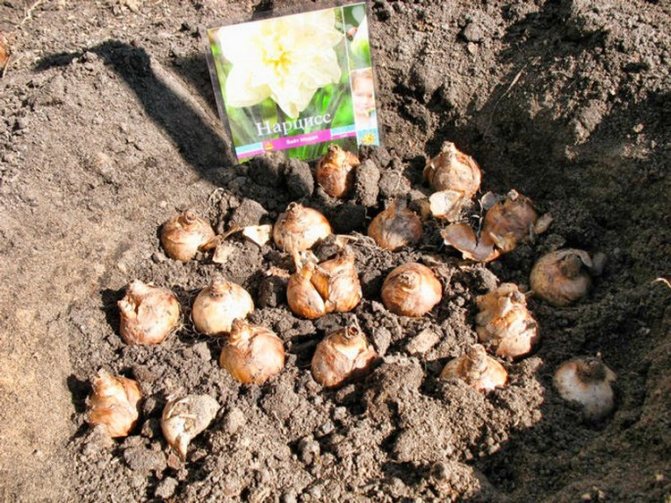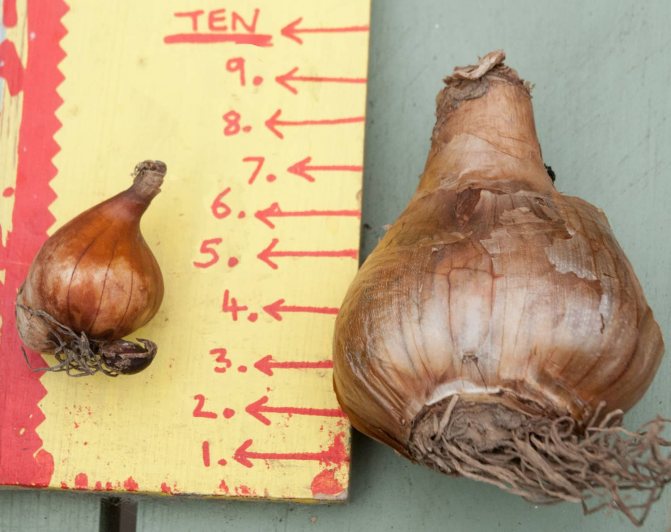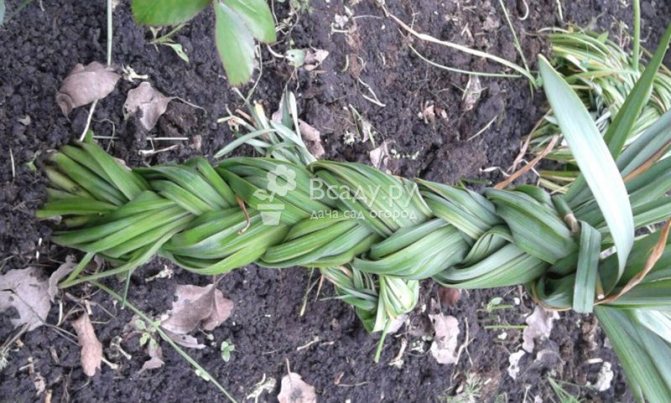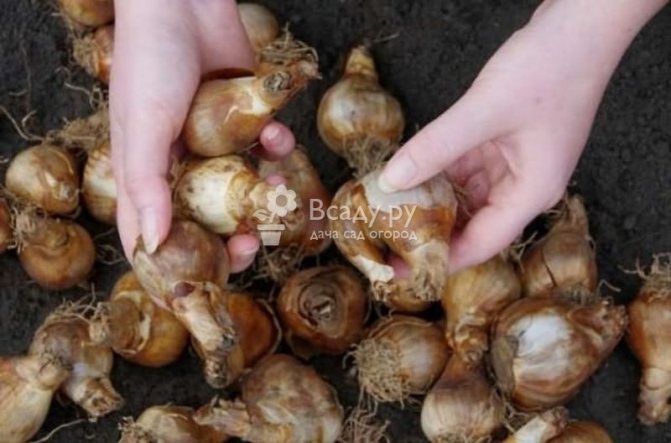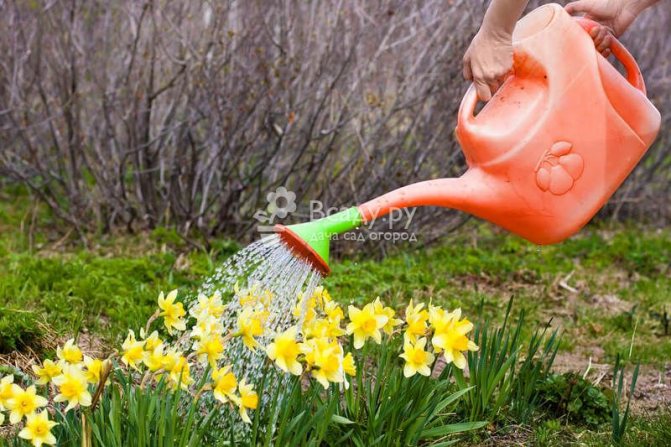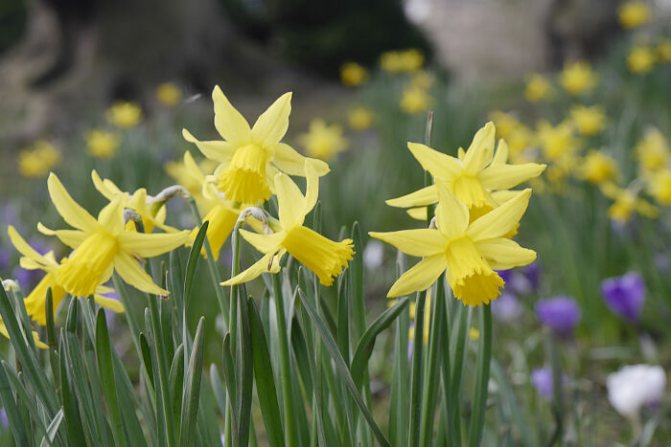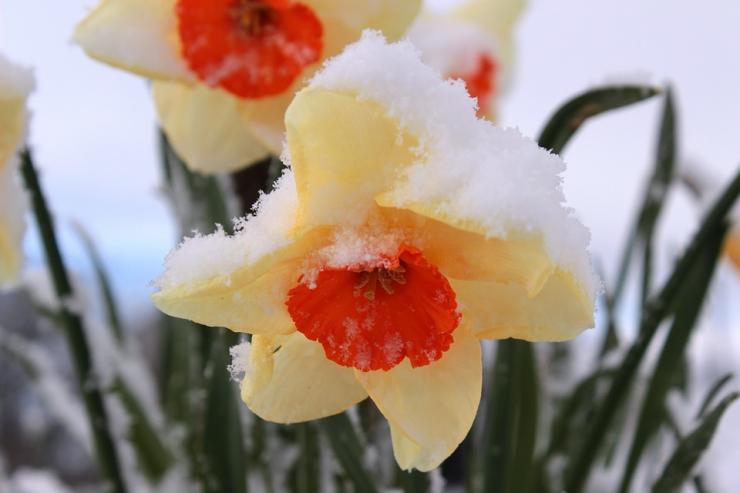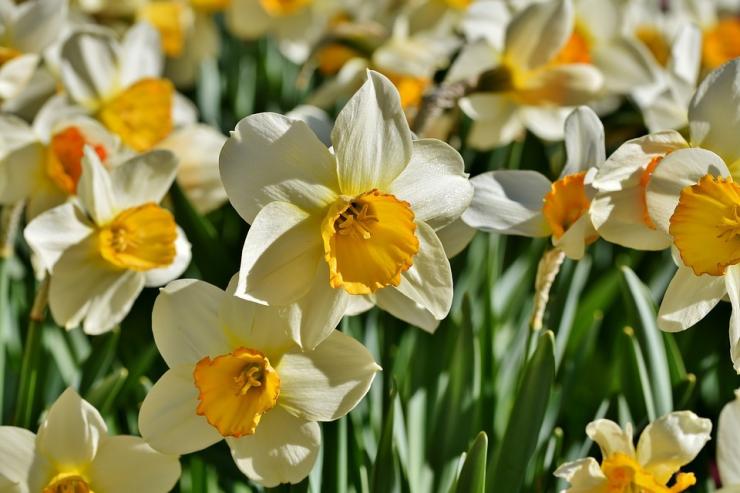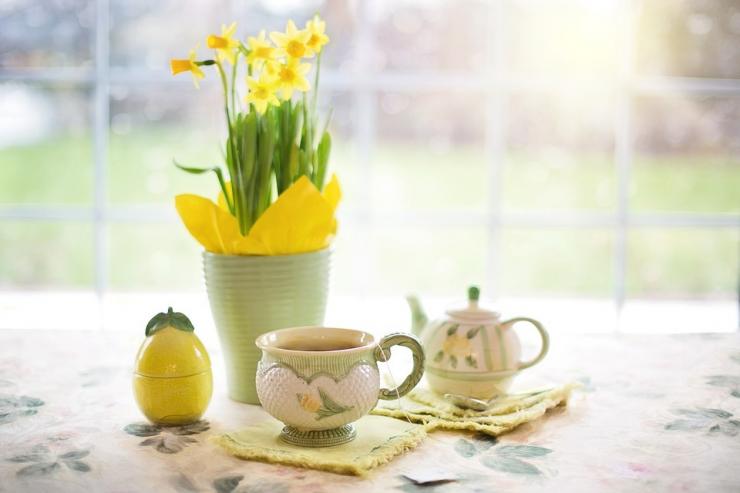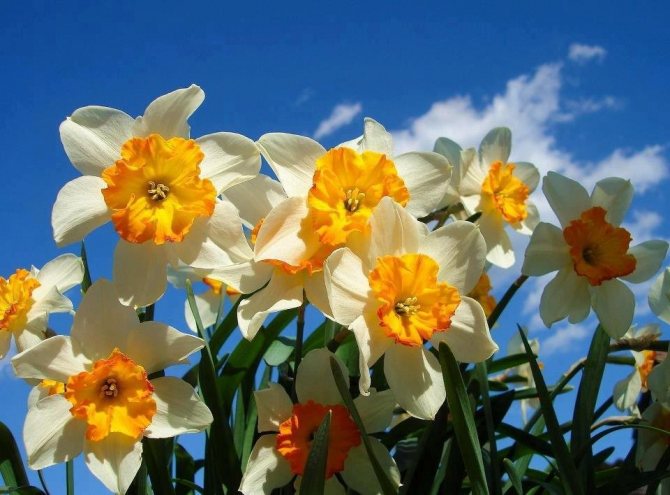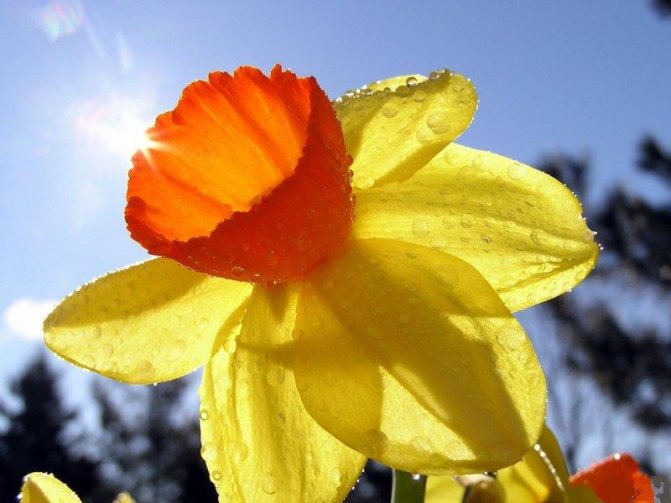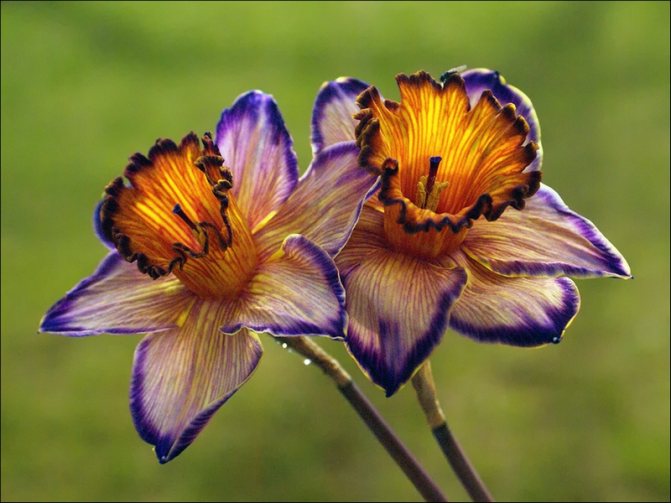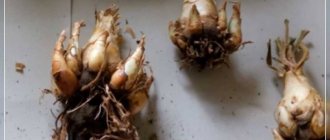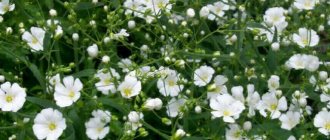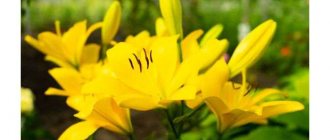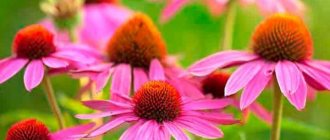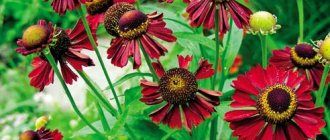It is difficult to find a garden plot without daffodils... Ornamental in bloom, they are distinguished by their equally attractive narrow dark green leaves. Due to improper maintenance, gardeners are content with them for landscaping curbs and flower beds. But it is worth making quite a bit of effort and in early spring delicate buds will open near the house.
Features of a narcissus
The flowering narcissus plant has dense bulbs and 2–4 ribbon-shaped leaf plates of different widths. Basal leaf plates of a linear shape appear before the peduncle. Leafless stems can be round or flattened, there is a film dragging on their surface. At the top of the stem, a flower is formed. Different types of daffodil have different shapes, they can be oval, ovoid, pointed or round. In some species, the bulbs form a nest; on one bottom, several bulbs are formed, which are wrapped in colored scales. Every year, the old roots of the bulbs die off, and new ones grow in their place, the lifespan of the roots is no more than 10 months. Drooping or straight flowers can be part of the umbellate racemose inflorescence in the amount of 2-8 pieces or be single. The shape of the petal-shaped perianth is a tubular funnel, passing in the upper part into a horizontally located limb.
Fresh articles for gardeners, gardeners and florists
How to grow petunia from seeds at home for seedlings
Planting carrots in spring sowing when to sow how to plant correctly
Lunar calendar for april 2020 of the gardener and gardener
Pruning an apple tree in spring for beginners in pictures step by step
The bridle can have a tubular, bell-shaped or cupped shape; it is formed by outgrowths of the perianth lobes, which are most often painted in a different shade. Flowers can be yellow or white. There are also species and varieties with two-color flowers. In diameter, they can reach 20–100 mm. The fruit is a three-nested box with seeds inside. Most often, the bushes reach a height of 0.1 to 0.5 meters. You can decorate your garden with daffodils, and if you wish, you can also grow them at home. Flowering is observed in April – May.
Daffodil transplant
Planted after drying after 2 months
Plants, planted according to all the rules, delight with flowering in the same place for a long time. It is recommended to replant them not earlier than after 5 years.
The need for a transplant can be determined by the following criteria:
- daffodils began to throw out fewer buds or stopped blooming;
- the flowers were shredded, the quality of the flowers decreased.
Plants are also transplanted if the variety needs to be propagated.
For transplant:
- bulbs are dug up in August, after the natural withering away of roots and leaves;
- cleaned from the ground and frees from dead parts - roots and leaves. Live roots are left on the bulb;
- examine: rotten, soft or damaged by pests are discarded;
- healthy - washed and treated with a fungicide solution;
If stored for longer, moisture will evaporate from their surface. Dried bulbs cannot be reanimated. Therefore, 2 months after digging them, they are planted in a permanent place.
When to plant daffodils in spring?
Agricultural technicians recommend planting bulbous crops in the fall, since most varieties require wintering in the ground before the onset of the active flowering phase. But this is not always convenient! In addition, if the selected variety is thermophilic and picky about care during the period of forcing the stem, then it is better to plant daffodils in the spring. But this is possible when the bulbs were stored in a refrigerator or cellar at temperatures ranging from -4 to +2 degrees. There will be no flowering without the cold phase! Daffodils should be planted in the spring as soon as the ground thaws. In the temperate climatic zone, this time falls in the first half of April, in more southern regions - at the end of March.
Fresh articles for gardeners, gardeners and florists
Ammonium in the garden use for strawberries
Top dressing of tomato and pepper seedlings with folk remedies
Lunar sowing calendar for 2020 gardener and gardener table
Pruning raspberries in the spring how to do it right
Flower propagation
They reproduce simply and quickly enough. One year after planting, one bulb will produce 3-6 daughter bulbs. Every 2-3 years, daffodils must be thinned out if they sit in a flower bed not in rows, but in a circle. If this is not done, the flowers are crushed, they will bloom worse due to tightness. Do not wait for this, plant them in advance. Some of the daughters of the bulbs will bloom next year!
As soon as the leaves lie down and turn yellow, you need to dig up the bulbs (you can use a pitchfork) and carefully examine. All plants damaged by diseases or pests must be burned. Do not feel sorry for even just soft, albeit healthy-looking specimens. We wash the selected healthy specimens in running water and dry them indoors (at a temperature of about 17 degrees Celsius).
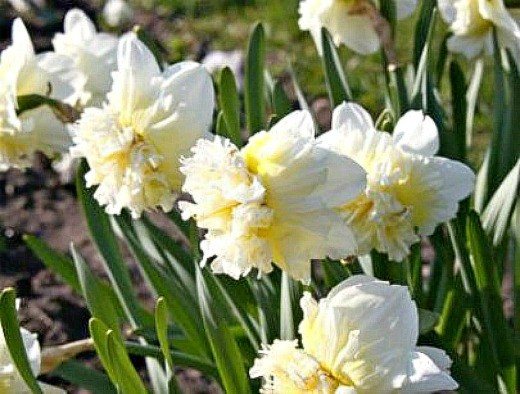
How to plant daffodils in spring?
As a rule, experienced florists are guided by the following agrotechnical techniques that help to preserve planting material in the presence of recurrent frosts and can increase the germination of plants:
- planting daffodil bulbs in the spring is carried out exclusively in the already completely thawed and slightly warmed earth;
- before landing, dig up the soil to a depth of at least one shovel bayonet;
- The planting depth of daffodil bulbs largely depends on the size of the planting material, as well as the structural characteristics of the soil.
Preparation and landing
Step 1. Seed selection
The daffodil has a bulbous root system. The bulbous method of propagation of the plant is the most common, although reproduction can be carried out by seeds. The choice of planting material should be approached responsibly.
Do not buy bulbs that:
- dug up with the remainder of the stem;
- sold with a flowering stem;
- have already begun to sprout;
- multi-peaked bulbs with many "babies".
Daffodil bulbs can be single-peaked (only one stem will grow from it) and multi-peaked.
Multi-peaked bulbs with one base can be cut into several pieces and planted separately, keep in the shade for several days before planting. The cut must be sprinkled with wood ash - disinfected.
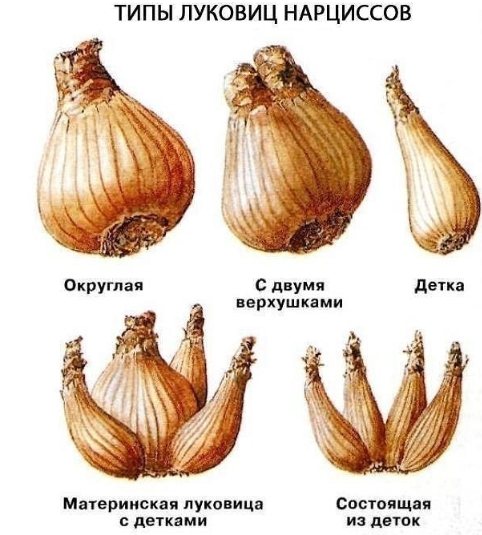

Buy bulbs towards the end of August, that is, about three months after flowering. Choose dense and firm tubers, with a clean bottom without a hint of rot
Step 2. Preparing the site and soil
An unpretentious daffodil can be planted on the sunny side or in a slightly shaded area.If you can avoid drafts, then the plant will delight you with large buds that will bloom for up to 2 weeks.
The soil for flowers can be sandy or even clay. You can add 1-2 buckets of humus to 1 m² of soil.
The main thing is not to apply manure!
Bulbs can rot. The future flower bed needs to be dug well.
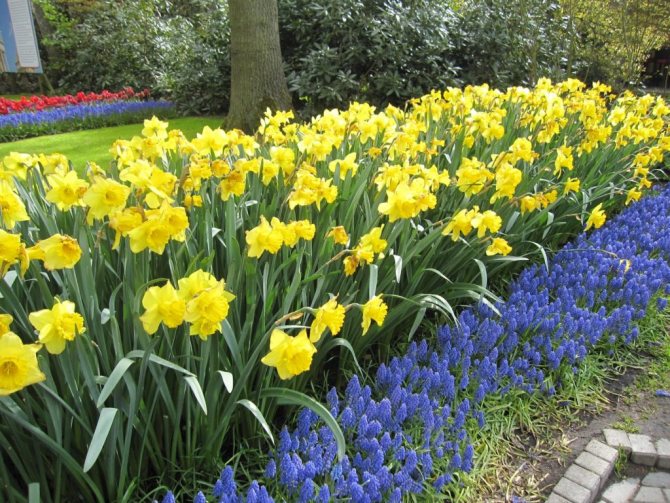

It is necessary to change the planting site of daffodils every 5 years for the soil to "rest"
Remember, daffodils do not like being near asters, phloxes, dahlias, chrysanthemums.
Step 3. Planting in open ground
When to plant daffodils and how to do it right? There is nothing complicated, but it is important to remember that the bulbs of these flowers are poisonous. So wear gloves.
- dig holes, focusing on the size of the bulb: the depth of the hole should be about three times the diameter of the tuber;
- add a mixture of ash and sand (2 tablespoons ash for a handful of sand);
- place the onion in the hole;
- sprinkle half with earth and tamp;
- pour with water - not cold;
- cover the hole with earth.


Planting daffodils is best in September.
Daffodils are best planted in September. You can also plant it in early spring, but you will first have to keep the bulbs in the refrigerator for about two months.
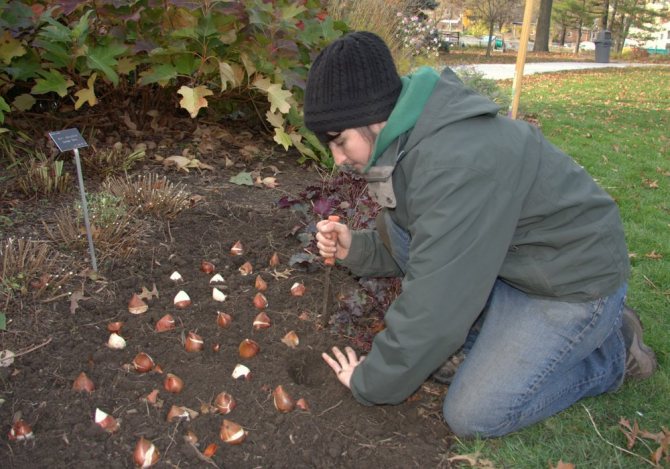

After planting, sprinkle the flower bed well with mulch or peat, which will protect the bulbs from frost
Outdoor daffodil care
Daffodils do not require special care, it is enough to apply traditional methods of caring for garden plants in time.
Fragrant flowers love moisture. Its lack negatively affects the flowering process. The plant should be well watered a couple of times a week from the moment the first shoots appear. In order for the bulb to absorb the nutrients necessary for growth, watering must be continued after flowering, until the plant completely withers away.
Also periodically you need to do weeding and loosen the soil of the flower garden. This will get rid of weeds and help reduce moisture evaporation. Dried faded flowers should be removed so that they do not unnecessarily take away the strength of the roots.
In the spring, daffodils are fed with ammonium nitrate. This nitrogen fertilizer has a beneficial effect on all processes in the life of a plant, especially on the growth of green mass. Phosphorus and potassium are added before flowering - this contributes to the formation of buds and active reproduction of bulbs.
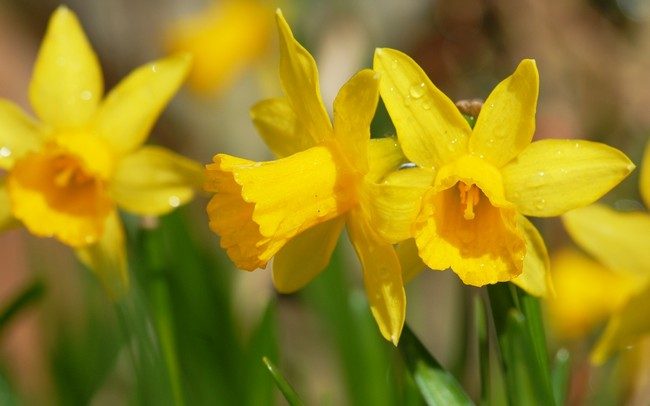

Fresh articles for gardeners, gardeners and florists
Treatment of trees in the spring from pests and diseases
Pruning trees in spring for beginners in pictures step by step
Spring processing of trees and shrubs from pests and diseases
Tomato picking in April 2020 according to the lunar calendar
Post-flowering care
After flowering in the garden, daffodils still require maintenance - you need to know when to prune and when to dig up daffodils.


If the daffodils remain to winter in the same place, it is highly advisable not to cut off their withering leaves - it is better to braid them into braids, removing the pedicels
When to dig:
The bulbs should be dug out after the flowering of the daffodils, when their leaves completely turn yellow. It's about mid-summer.
Do not trim live roots!
After you dig, do this:
- clean the bulbs from excess soil and tops;
- examine them and leave only healthy ones, without signs of disease;
- dip the bulbs in a manganese solution for half an hour;
- separate the small teeth from the mother's head and sprinkle the "wounds" with ash;
- put the onions in a dark room to dry.
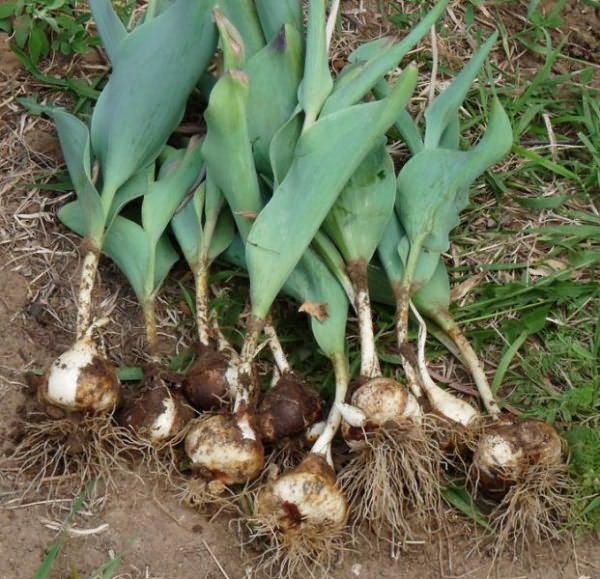

It is not necessary to dig up the bulbs every year. This is necessary if you notice that the plants have begun to bloom worse.
Disease and pest control of daffodils
The culture is affected by fusarium, rot, and is also populated by the narcissus fly, tuberous and onion hoverflies, onion and root mites, slugs, and nematodes.
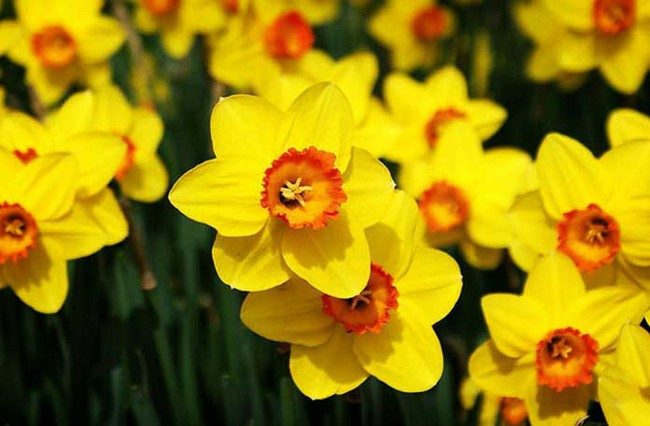

As protective measures, two-time treatment of plants is carried out:
- Before the start of bud formation, spraying with insecticidal acaricidal preparations is organized according to the manufacturer's instructions.
- Upon completion of flowering, daffodils are treated with a solution of copper sulfate at the rate of 100 g of substance per 10 liters of water, at a consumption of 2 liters of working fluid per 10 m2, or with the preparation "HOM" with the same consumption rate, prepared by diluting 40 g of the product in 10 liters of water.
Preparing the soil for daffodils.
About a month before planting daffodils, the earth is dug to a depth of 35-40 cm. On heavy soils, an additional 30-40 kg / m of sand and 10-15 kg / m2 of peat are added. Acidic soils must be limed with dolomite flour (200-300 g / m2) or chalk (150-200 g / m2).


Doses of the main fertilizer and subsequent fertilizing are determined in accordance with the data of soil analysis. Usually, when digging, 25-30 g / m2 of nitroammofoska, 200 - granulated bird droppings, 200 - ash and 200 g / m2 of bone meal are added.
Fresh manure fill the soil only 2-3 years before planting daffodils.
For more beautiful flowers, you can create a high quality artificial soil mixture for daffodils by mixing thoroughly in equal parts by volume:
- coarse river sand,
- rotted manure (preferably three-, four-year-old),
- alumina (sod soil),
- deep peat,
The acidity of the soil for daffodils should be at least 6.5, for which chalk must be added to the soil.
Growing at home
It is very easy to grow beautiful indoor daffodils at home, using a small pot and a couple of bulbs, knowing just a few rules. The main thing is to choose the right container so that the flowers are not cramped. You also need to carefully follow the necessary planting and watering scheme. Not forgetting about all this, as well as about timely pruning, the daffodil will bloom for a very long time.
Learn about caring for daffodils after flowering.
Capacity selection
To plant the bulb, you need to choose a small pot or any glass container so that the plant will sit tightly in it. If the roots fit too closely together, you need to find a larger container. Choosing the right pot is very important: a tight space will prevent the flower from growing. An excessively free capacity is also undesirable: the extra earth will absorb all the liquid and useful trace elements, which may cause the plant to die.
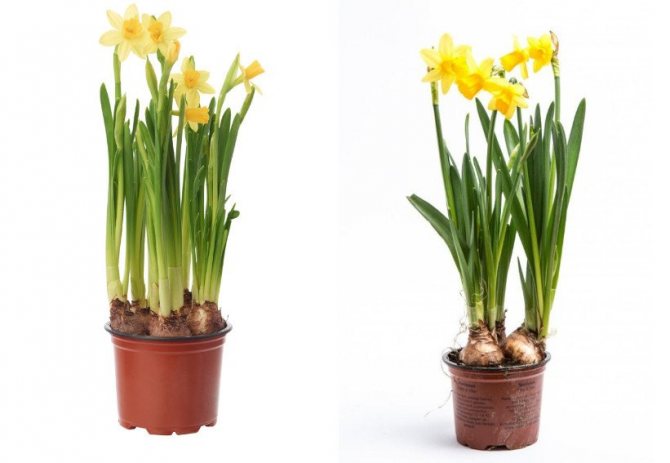

Landing scheme
To plant a flower in a pot, you need to follow a few simple steps:
- Take a small pot.
- Place the onions in a bowl, sprinkle with earth on top and sides.
- Press down a little. The land can be taken ordinary, garden.
- Pour so that the whole earth gets wet: the bulbs will quickly take in all the water.
- Put the pot on the windowsill towards the sun, in partial shade.
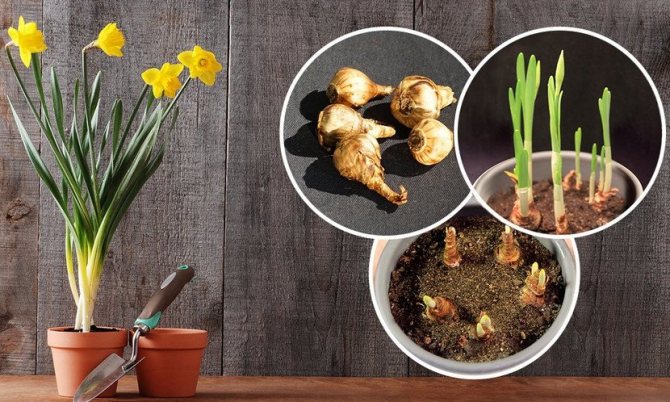

Watering
You need to water it every three days, but a little bit, since these flowers do not tolerate a lot of excess moisture and may die. If the daffodil is still very young and small, 150 ml will be enough for him for one watering. The more the plant grows, the more moisture it will need. The maximum amount of water at a time should not exceed 300 ml.
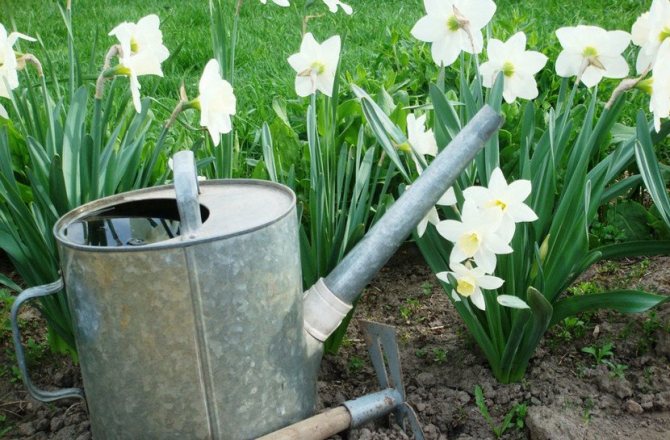

Pruning
Gently, holding the plant at the root, you need to cut off the entire lifeless part. The main thing is not to touch the bulb, so that in the future it will continue to develop, and the plant itself will delight with its flowering. It is necessary to maintain it with gloves, and after cutting, water and fertilize the flower. This will provide some supply of nutrients for the narcissist to quickly recover.
Important! Pruning can only be carried out after the end of the flowering period and complete yellowing of the foliage.
Why daffodil does not bloom
There are several reasons why a plant may not bloom:
- Too many or too few nutrients. In order to avoid such a situation, it is important not to fertilize the plant at all for the first year, and then - to do it only in the spring.
- Leaves were cut early.It is worth waiting until the whole part turns yellow to the end, and only then start trimming.
- Little light. You cannot plant flowers in full shade. It is worth replanting the bulbs in an open and warm area.
Harvesting and storage of daffodil bulbs.
40-70 days after flowering, the plant begins a period of temporary dormancy, characterized by a phase of complete drying of the leaves. This is the optimal time to dig up the bulbs. The daffodil bulbs are dried for several days, after which the roots and leaves are removed.
There is also another option - immediately after digging, you need to rinse the bulbs in running water, remove the roots and leaves and immerse the bulbs in a 0.4% solution of rohor (karbofos) for half an hour, then dry them for 3-4 days, after which daffodil bulbs are heat-treated and stored. The temperature regime during the storage period is determined by yourself:
- for early forcing, the bulbs are stored at a temperature of 17 ° C, and then at a temperature of 8-9 ° C,
- for late forcing, the bulbs are stored at 17 ° C until mid-November or December.
Forcing daffodil bulbs
Forcing the bulbs is carried out in greenhouses, usually in a pot or in boxes. Daffodils are grown in a pot in order to get fresh flowers on time.
Only large and healthy bulbs weighing at least 27 g are suitable for forcing. If flowering plants are needed by the specified date, then only heat-treated bulbs are planted. When exposed to high temperatures, the rate of formation of a daffodil flower increases significantly. After heat treatment, the bulbs must be stored in a cold room. Thus, heat treatment of the planting material allows you to get flowering daffodils faster.
For very early forcing, prepared bulbs are planted in early October, and for early forcing in mid to late November. For late forcing, the bulbs are planted in mid-November or December. For late forcing, varieties of late flowering are used.
Daffodil bulbs are planted in containers, boxes, pots, or on racks filled with earthy mix. The earthen mixture is made up of loose sandy loam and leafy soil (2: 1). Drainage is prepared from a mixture of shards of clay pots and clean river sand. It is important that the tops of the bulbs protrude 1-2 cm from the ground.


During the rooting period, the temperature is maintained at 5-8 ° C. When the height of the sprouts reaches 10-12 cm, the temperature is raised to 10-12 ° C. It is advisable to increase the illumination in the room during this period.
Bulbs, heat-treated and prepared for early flowering, usually bloom in January, and some varieties even at the end of December. The lower the temperature during the flowering period, the longer it will be. The flowers of the same variety are somewhat smaller when forcing, and the peduncles are higher than in the open field.
When forcing daffodils by January 1 or February 1, it is recommended to use the varieties Golden Harvest, Barrett Browning, Carlton; in addition, by February 1 - Mauin Hood, Dutch Master, Fortune, Merkato, Ice Fallis; almost all varieties can be grown by 3-6 March.


Now you know all the secrets of growing daffodils in the open field - in the garden or in the country.
Growing daffodils.
The plant can be planted in spring and autumn. Autumn planting. Autumn is the best time to plant. The planting of the bulbs should be carried out in September, then they will have time to take root before frost. The soil must be prepared 30 days before planting. It needs to be dug up, loosened and fertilized with humus.
Spring landing. In regions with a cold climate, the bulbs are planted in spring, but they do not have time to ripen, flowering is late and occurs only in April. Disembarkation is possible after the snow melts.
For normal growth and flowering of daffodils, you must choose the right place. It should have good lighting and protection from the wind, as well as soil with neutral acidity, which allows air and water to pass through.
It is not recommended to plan a flower garden in a place where other bulbous plants grew before. This is done in order to reduce the risk of plant diseases.
In one place, daffodils grow for about 5 years, then flowering becomes scarce. In order to solve this problem, the flower garden simply needs to be moved to another place.
Spring planting rules for daffodils
The most unpretentious bulbous plants that are deservedly popular with flower growers in our country are daffodils. These flowering plants can be cultivated not only in sunny but also in shaded areas.
It is safe to say that even inexperienced flower growers manage to plant such plants, as well as grow them. Planting bulbs is allowed not only before winter, but also in early spring. Planting material can be planted as soon as the ground in the flower beds warms up and thaws to a depth of at least 20 cm.
Propagation of daffodils by bulbs.
Bulb propagation of daffodils is vegetative propagation. Daffodils are usually propagated by separating the daughter bulbs from the mother plant. In the second year of cultivation, a single-peaked bulb usually turns into a two- or three-peaked bulb; each of the peaks in the process of growth gradually detaches, the scales that unite them gradually die off and a single nest is divided into separate bulbs.
Usually, you can get 3 from one onion, but this greatly depends on the variety. Getting 3 bulbs out of one in 3-4 years is not a very efficient way, so many have learned to divide the bulbs differently.
For example, if you make shallow perpendicular cuts at the end of daffodil bulbs, put the bulbs on racks and store them at room temperature, then 8-10 small bulbs are formed in the cuts. With good care, after 3 years, they will develop suitable for flowering bulbs.
In addition, in August, the daffodil bulb can be divided so that parts of two adjacent scales are fixed on a common bottom - something like this:


The separated bulbs are stored in polyethylene bags filled with perlite at room temperature. Such bulbs are planted as usual. Plots of different varieties have different survival rates in the same conditions.
Botanical description of daffodils
Narcissus is a perennial bulbous plant of the Amaryllis family. To date, about 50 species have been found and studied. Natural habitat: Mediterranean, Southern Europe and Asia.
This is an unpretentious flower that is well suited for a novice gardener:
- It is easy to grow and is not picky about light, moisture and soil composition.
- It can be safely planted next to other crops.
- It has a strong, pleasant aroma. Many other flowers with the same good aroma are somewhat more difficult to grow.
- There is a large selection of varied, including decorative varieties.
The leaves grow only at the root, forming a small bunch of greenery, from the center of which an erect flowering stem grows, on average, about 40 cm high. The stem is crowned with buds - one or a small group. There are no leaves on it, and the shape is oval and slightly flattened.
The flowers are large, about 8-10 cm in diameter, white, lemon and yellow. The buds are slightly tilted under their own weight. The petals are common and double. The root is in the form of a bulb with slender roots that grow in all directions.
Well suited both for a personal plot, preferably closer to the windows for the scent to spread around the house, and for an alpine garden.
